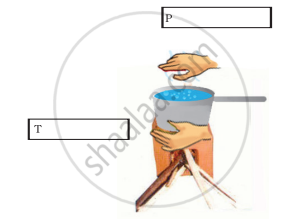Advertisements
Advertisements
प्रश्न
Write scientific reason.
In the cold regions, snow falls in winter.
उत्तर
- Snow is formed high in the clouds from water vapour.
- In cold regions when the temperature is extremely low, water vapour freezes around smoke or dust particles forming ice crystals.
- When these ice particles combine with each other they turn heavy and start falling to the ground.
This gives rise to snowfall in cold regions in winter.
APPEARS IN
संबंधित प्रश्न
What is heat ? State its S.I. unit.
While deciding the unit for heat, which temperature interval is chosen? Why?
What will absorb heat?
Water
What will absorb heat?
Plastic plate
What will absorb heat?
Soil
Find the odd one out and give its explanation.
The unit of heat and temperature are the same.
______ is a form of energy.
How can heat energy be generated?
To keep her soup warm Paheli wrapped the container in which it was kept with a woollen cloth. Can she apply the same method to keep a glass of cold drink cool? Give a reason for your answer.
Observe the picture given in Figure 4.8. Water is being boiled in a pan of wide base.

- Which position P or T will feel warmer?
- Fill up the boxes P and T to indicate the mode of flow of heat to the hand.
The SI unit of heat energy is ______.
The water in the black can becomes ______ than that in a white can after exposure to the sun.
Black color is a ______ absorber of heat.
Match the following
| 1. | Heat | a. | Good absorber |
| 2. | Temperature | b. | Form of energy |
| 3. | Black surface | c. | Insulators |
| 4. | Rubber, cork | d. | The measure of hotness or coldness |
The sum of the kinetic and potential energy is called the ______ of the molecules.
Match the following:
| Column A | Column B | ||
| 1. | Heat | a. | Heat gained or lost in the change of state without any change in temperature |
| 2. | m × L. | b. | Heat gained or lost when there is no change of state |
| 3. | Temperature | c. | Form of energy |
| 4. | m × s × t | d. | SI unit of specific latent heat |
| 5. | J/Kg | e. | degree of hotness or coldness |
Explain the following effects of heat.
Chemical changes
